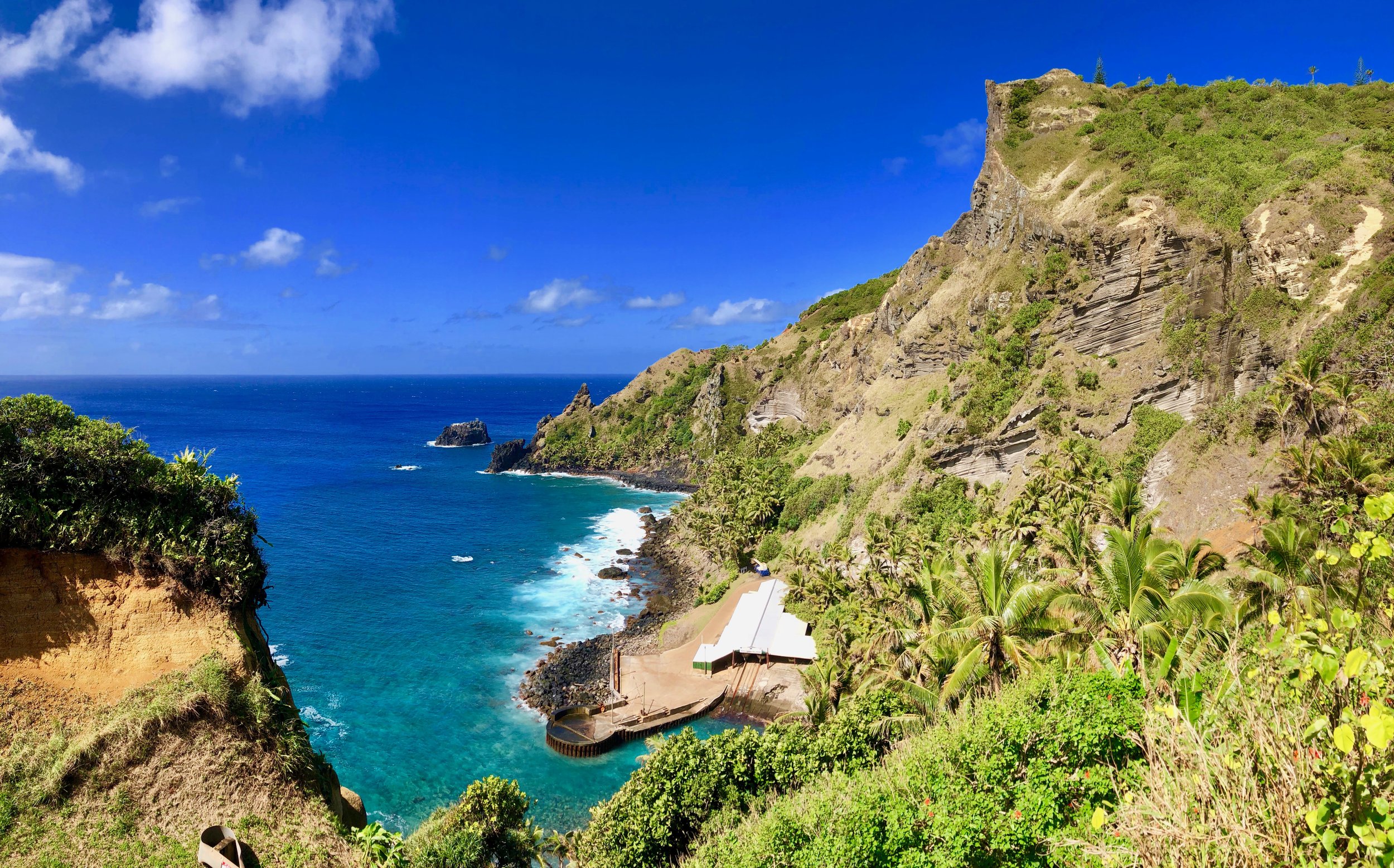
Life On Pitcairn
Like elsewhere in the world, modern appliances are a part of everyday life on Pitcairn.
All houses have refrigerators, washing machines, deep freezers, electric and gas stoves, television sets, computers, microwaves and stereos. News and entertainment is generally accessed via the Internet.
The Pamai Centre is situated on the main road. There you will find the General Store, the Post Office and the Government Treasury Office. It is the hub of Pitcairn’s commerce.
The side road along from the Pamai Centre leads down to the Public electricity generators which operates from 6.00am to 10pm daily. Most private homes and many government buildings are now Solar Powered.
Before entering the Square, there is a short road that leads to the Island’s Medical Centre. Built in 1996, it replaced the old dispensary at the Square.
Continuing along the main road is the Public Square, ‘upside’ the road, The Public Hall, with a veranda running along its entire length, takes up one side of the Square, and outside, on a plinth, stands Bounty’s anchor, which was recovered by Yankee in 1957.
The Public Hall, serves as the Court House and Council Chambers and as a focal point for social gatherings and public functions. The internal walls are decorated with historical and official portraits and memorabilia.
Directly across the Square, from the Public Hall, is the Seventh Day Adventist Church. On the third side of the Square is a building containing the Island Council Office.
Further down the main road is Bob’s Valley where the temporary Cultural Centre, Tourism Office and Public Library are located.
Just past Bob’s Valley, is the road leading to the Mill (a sugarcane mill still in operation), the island cemetery and the historic house site of Thursday October Christian.
Back on the main road, past the Banyan trees the road leads out to Pulau where the school, and the Administrator’s residence is located. Although, not strictly speaking, part of Adamstown, the school sits below Christian’s Cave and the eco trail which leads up to the cave can be found just below the school.
The Pitcairn Islands comprise a British Overseas Territory
Location: South Pacific Ocean
Capital: Adamstown
Population: 35 (2023)
Currency: New Zealand Dollar
Language: English & Pitkern
Area: 47km2
Time Zone: UTC-08
Calling Code: +64
Internet TLDL: .pn
ISO 3166 code: PN
The Adamstown Neighbourhood
The threshold of Pitcairn is a steep road, known as the ‘Hill of Difficulty’, running from Bounty Bay to the Edge. This road, which follows the track used by the mutineers when they landed, rises upward for 70 metres hugging the side of the cliff. As in the days of the mutineers all supplies must still be transported up this road, although tractors and quad bikes make the task less onerous today.
Most Pitcairners live in and around Adamstown, the original home of the mutineers, though some newer homes have been built at the top of the island to make the most of the incredible views. Adamstown is well situated on a northerly slope, 120 to 150 metres above sea level, and covers an area of 20 hectares. From the Edge, the main road currently runs for about 800 metres through Adamstown, roughly parallel with the coastline. The houses are scattered along the main road and side roads.
The houses are quite modern and practical, making them ideal for the climate and weather conditions that the island experiences. The sizes of the houses vary significantly depending on need. All roofs are of corrugated iron from which guttering and pipes lead rain water into private tanks or wells for a good supply of fresh water.
Although kitchens are now incorporated into the houses, several houses still have the traditional outside kitchen as well. Hot water is heated by LPG Gas and or Solar. Most home have installed inside flush toilets, however, many locals still favour the old ‘Duncan’ out-house.
Shop Around The Pamai Centre
Built in 2020, with funds from the European Union, the Pamai Centre in Adamstown is the central place of business for Pitcairn Islanders. It houses the Pitcairn Island Post Office, the Government Treasury Office and the Pitcairn Island General Store.
The General Store
Established as a co-operative society in 1967, the General Store has provided for the household needs of the community ever since.
Today it is situated within the Pamai Centre, on the main road in Adamstown, the General Store stocks an excellent variety of frozen meat, vegetables, groceries, toiletries, clothing and footwear, kitchenware and stationery as well as timber, plumbing, electrical, white ware, gardening supplies, auto parts and general hardware. The items are purchased in New Zealand and sent to the island on the supply ship four times a year and locals also sell their own fresh produce and baked goods from the store too.
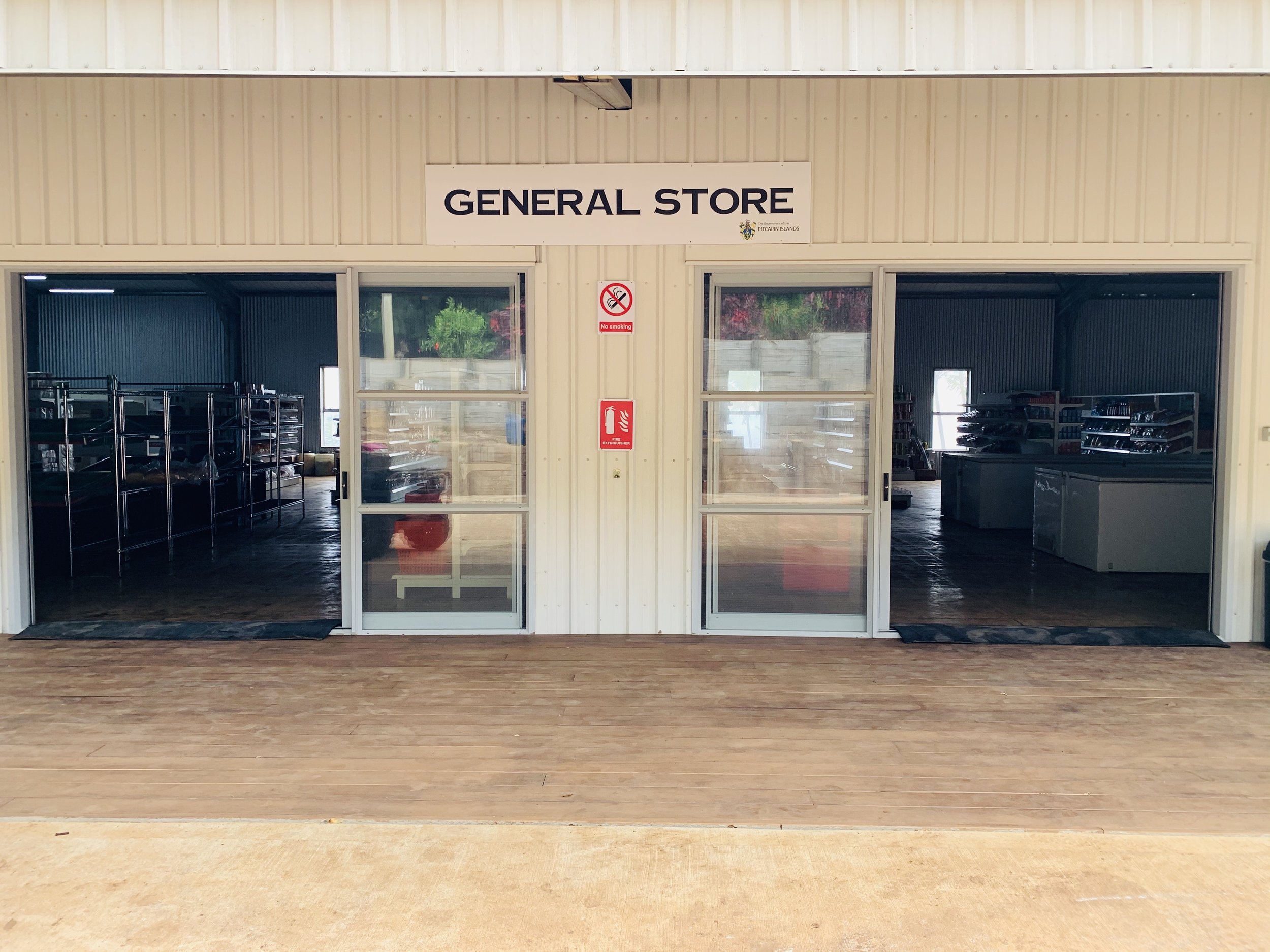
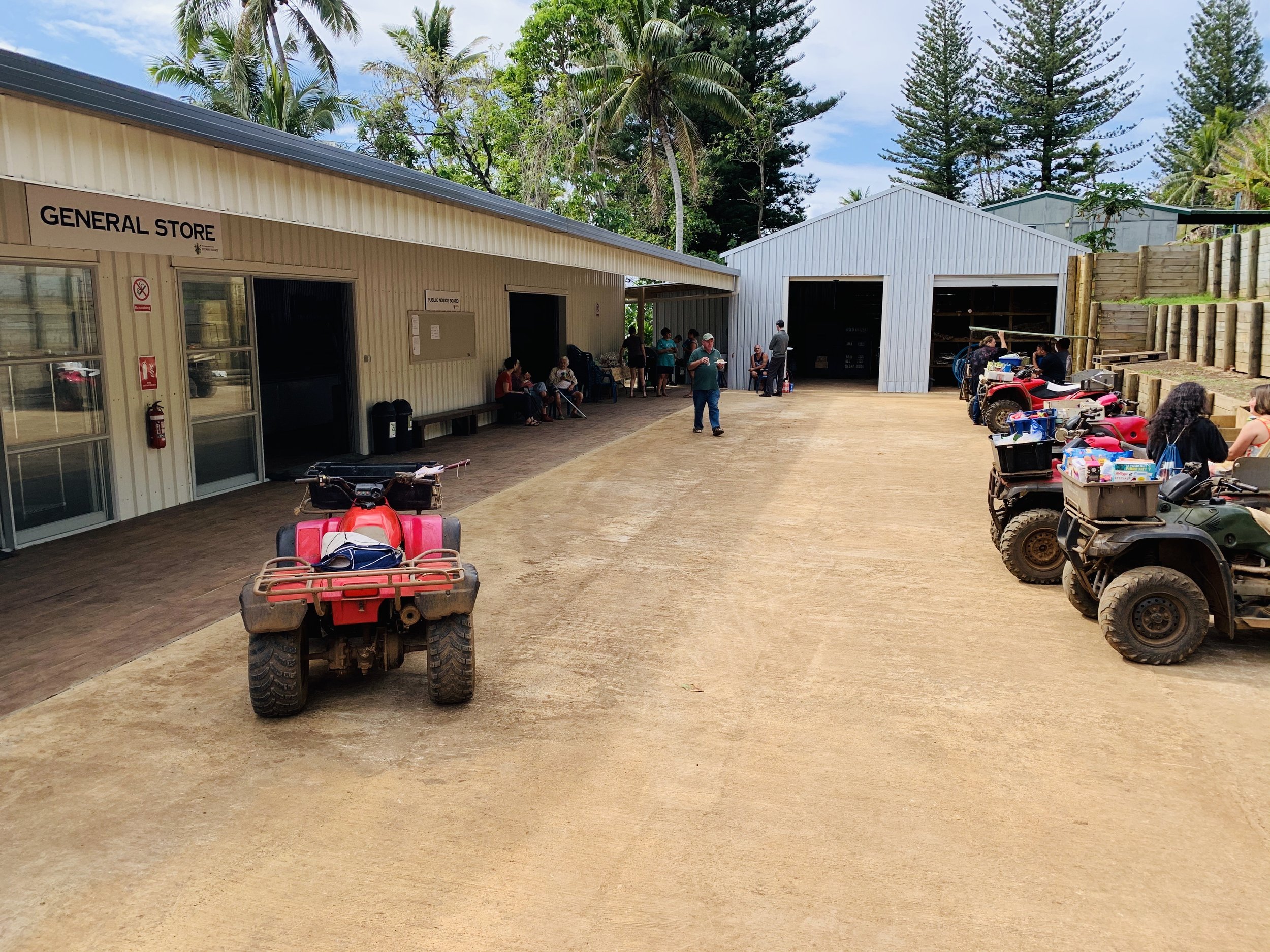

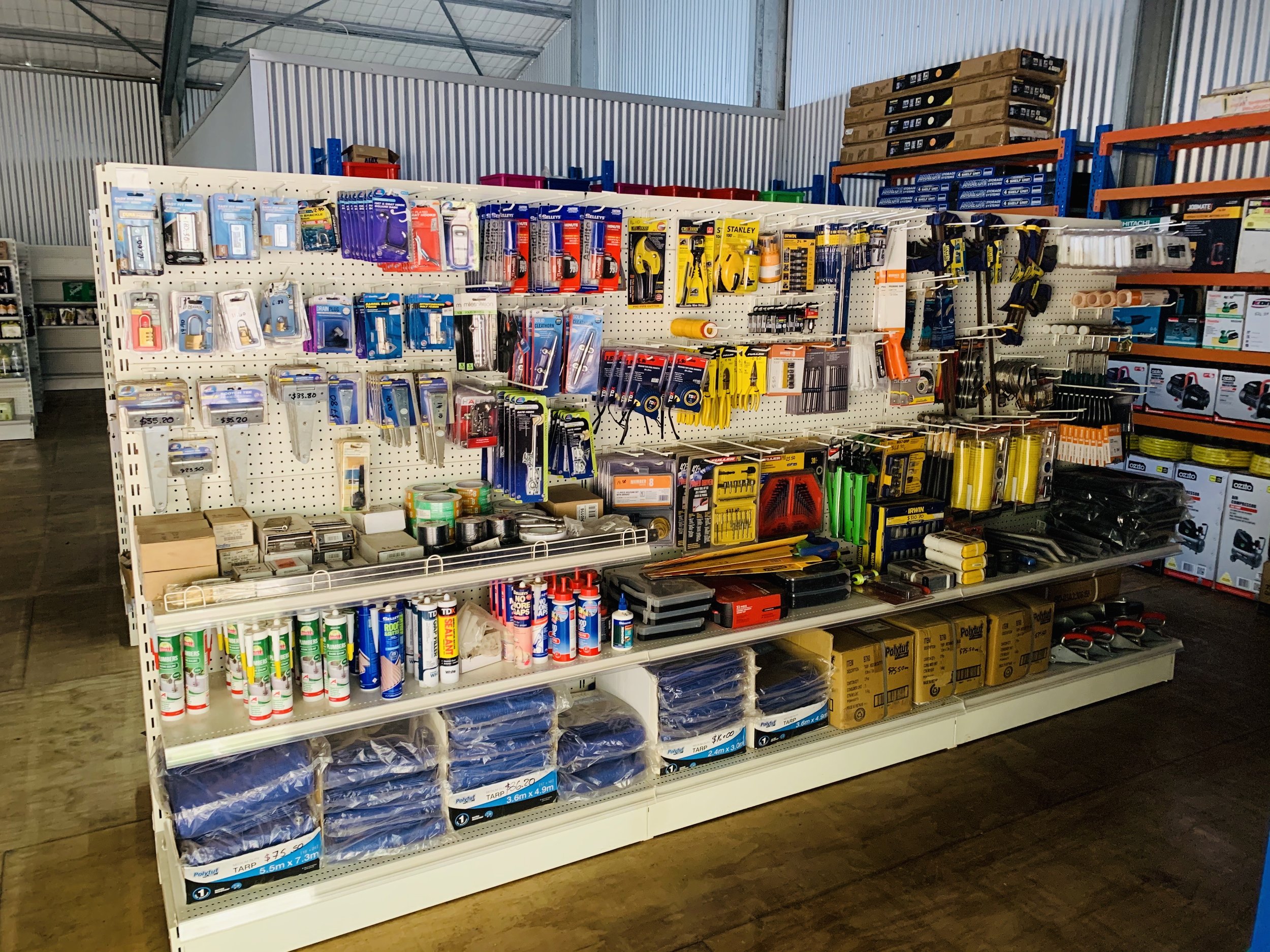
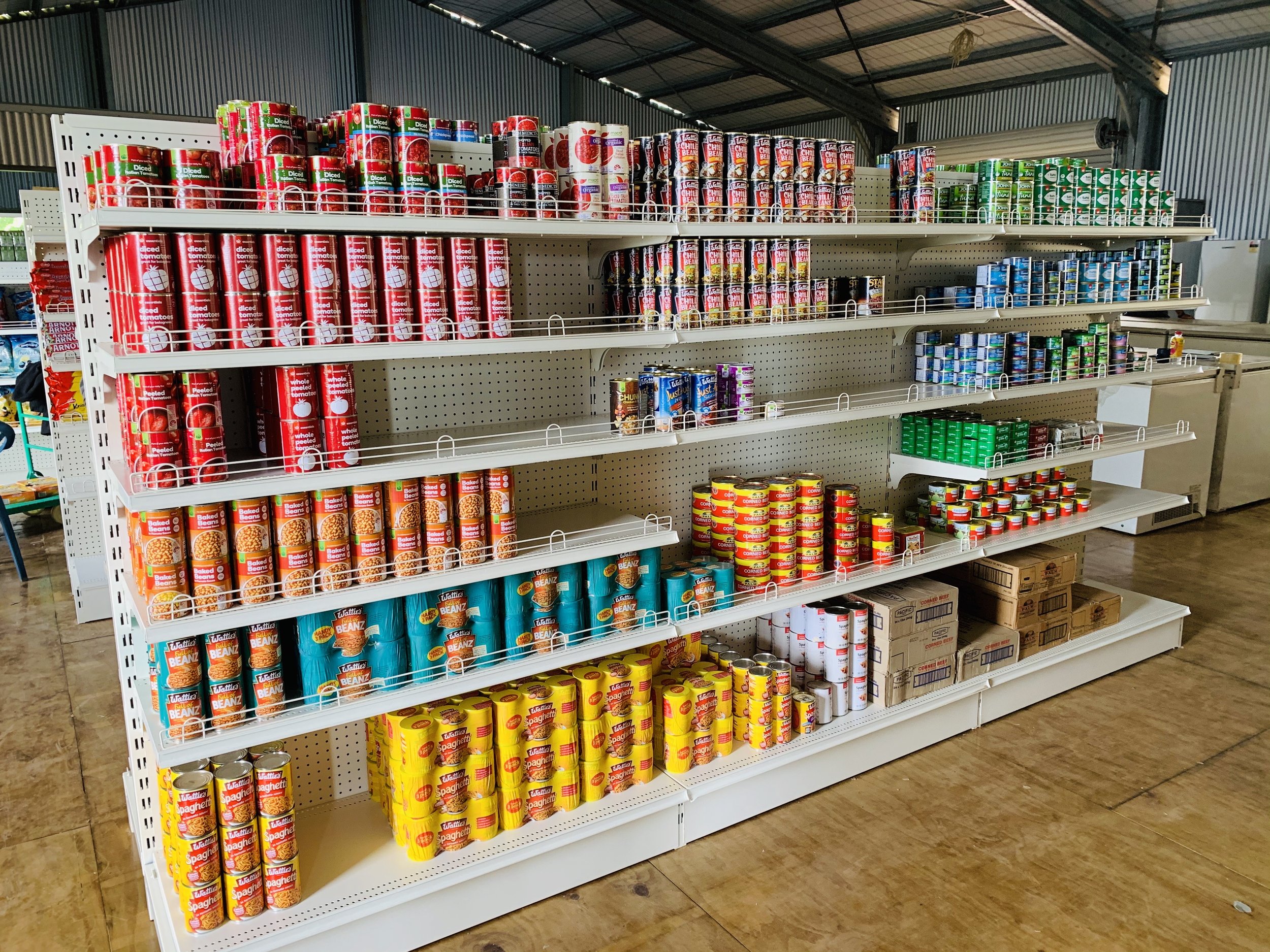
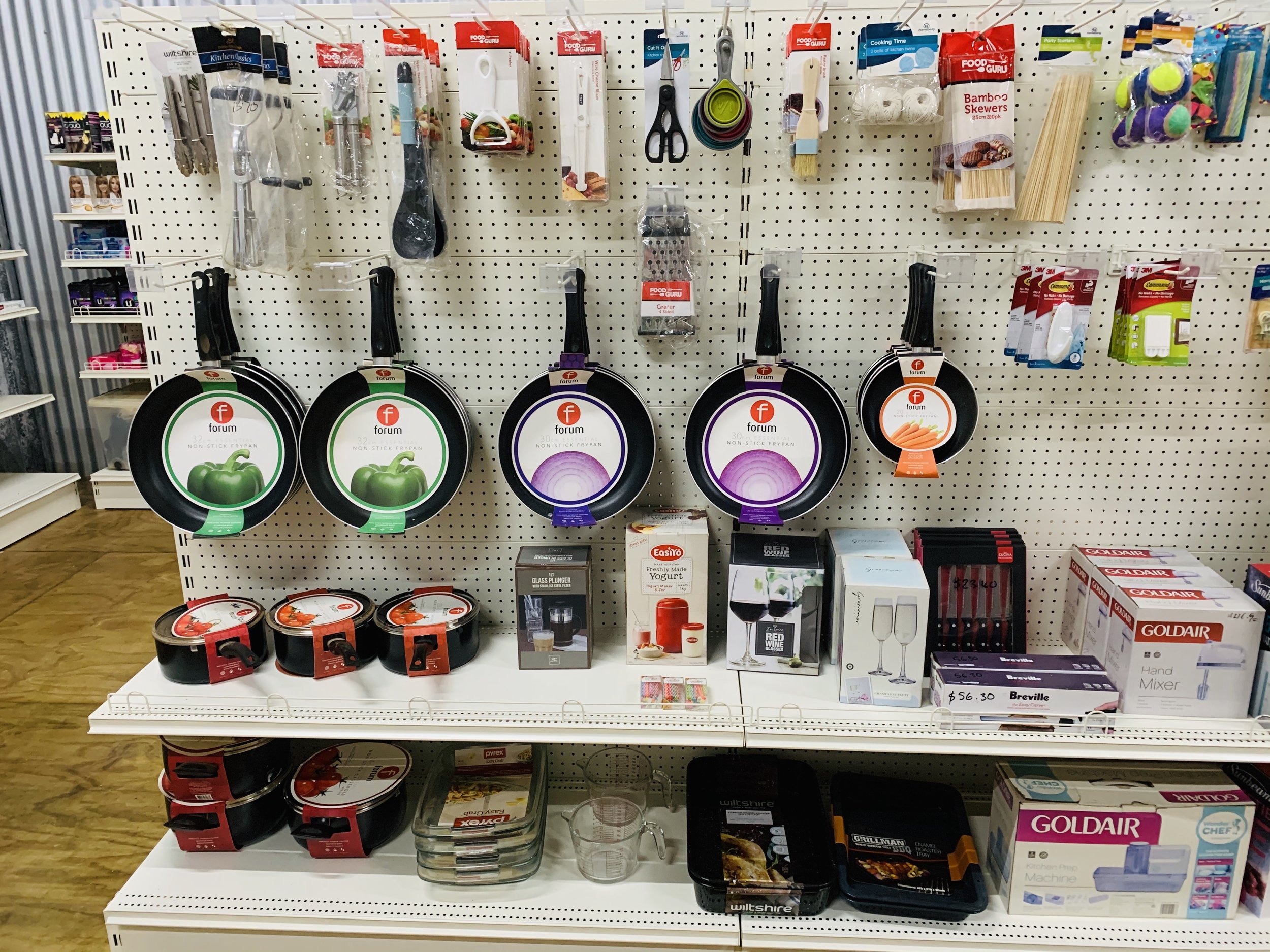
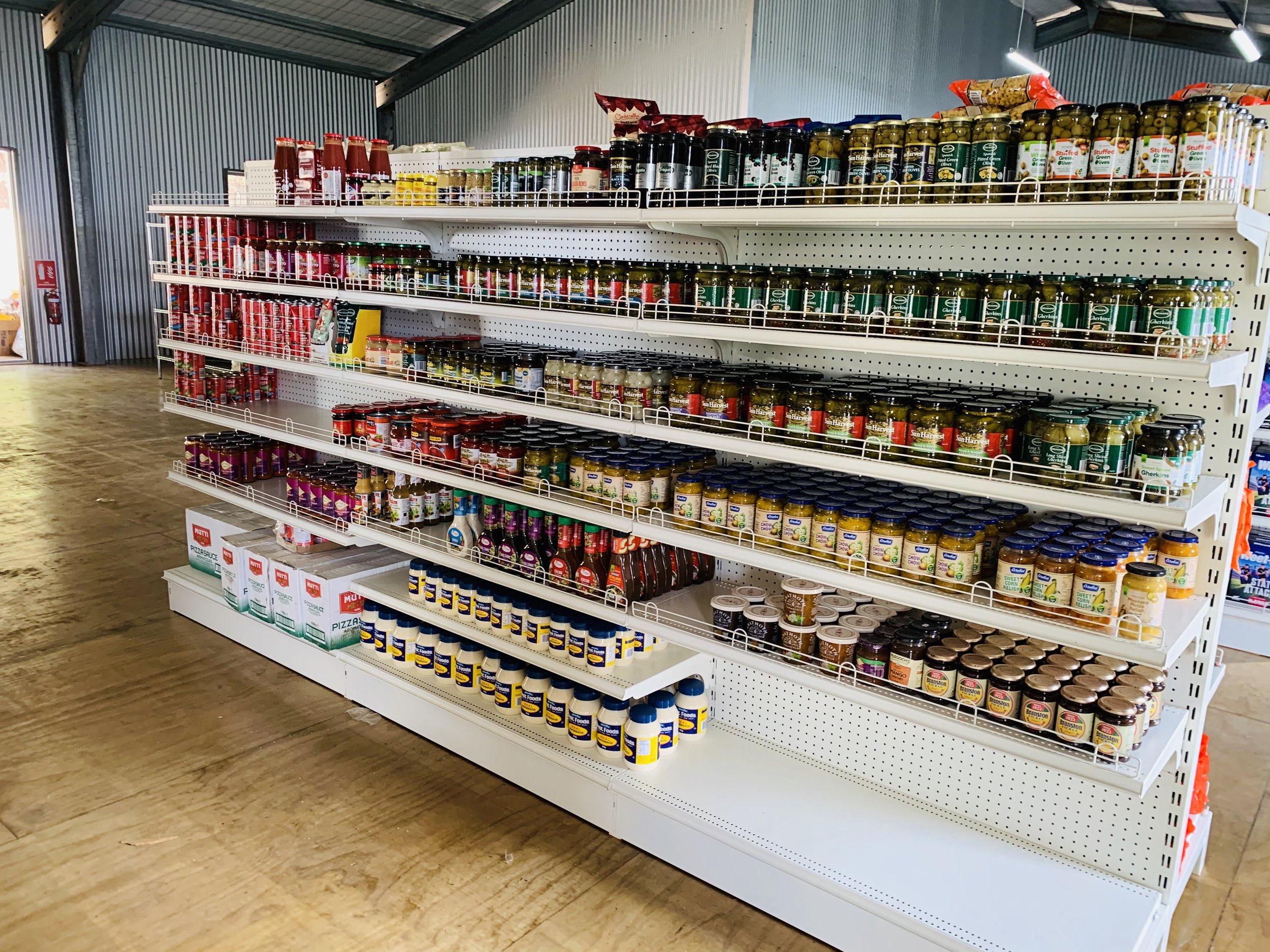
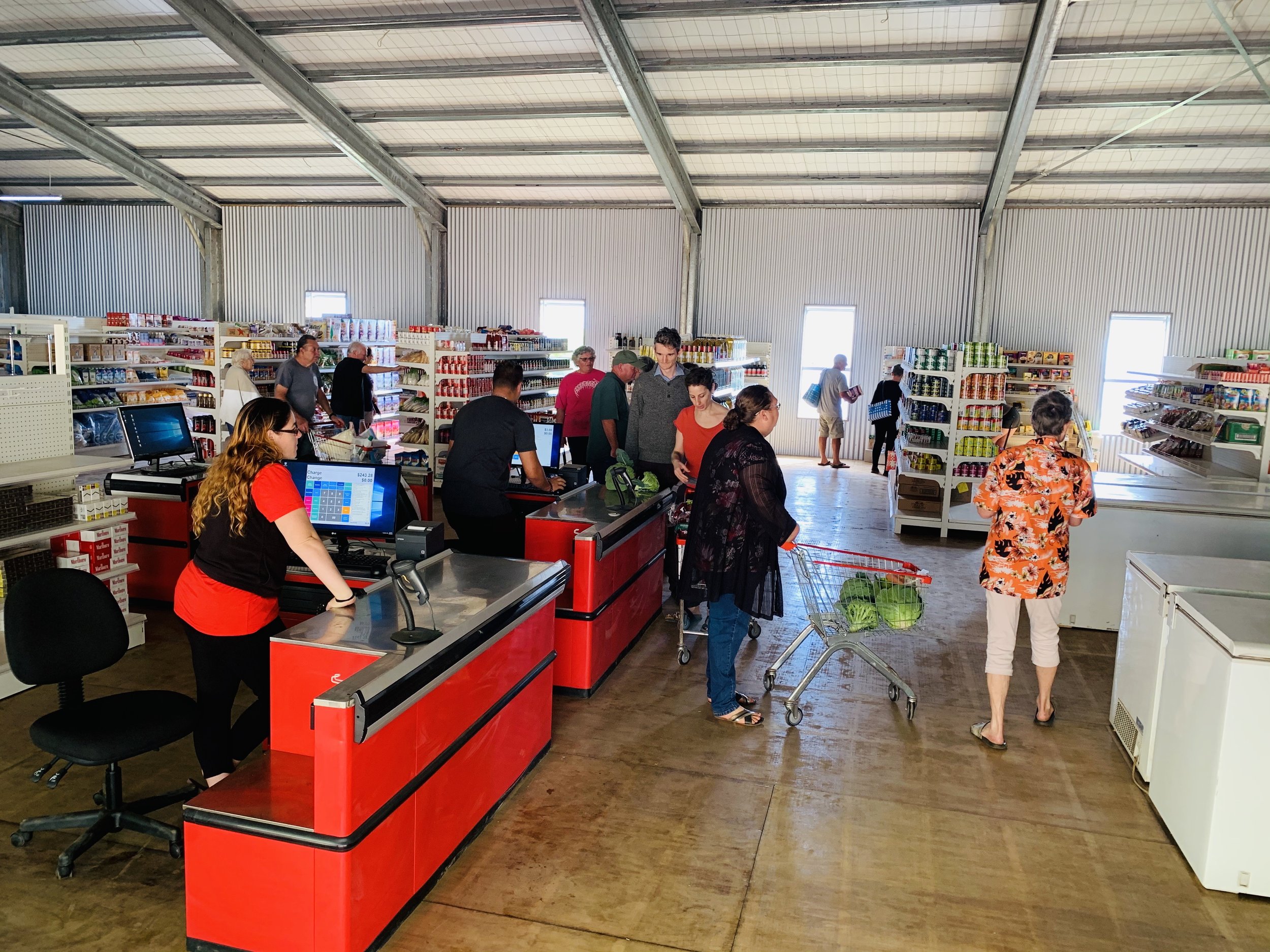

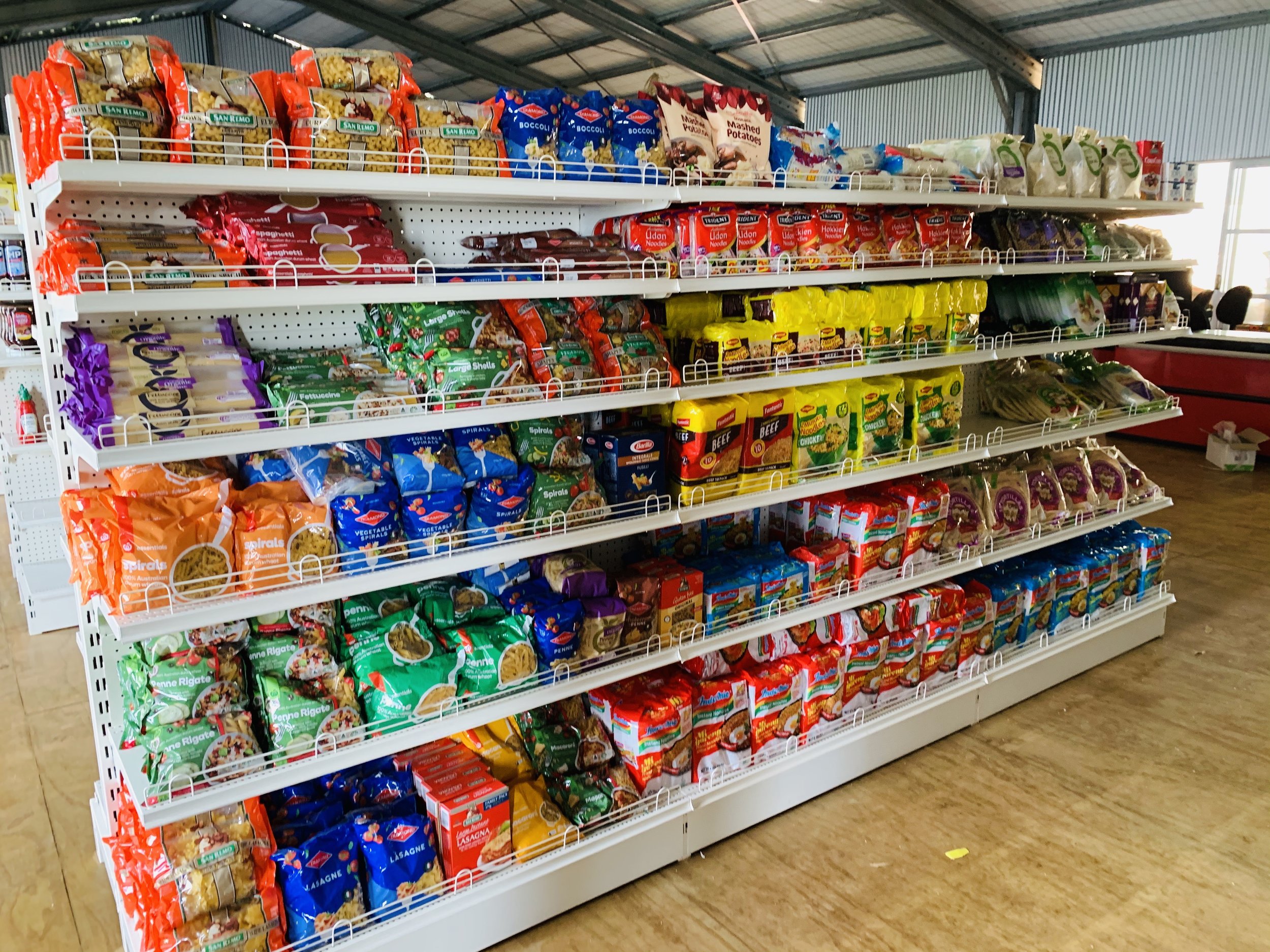
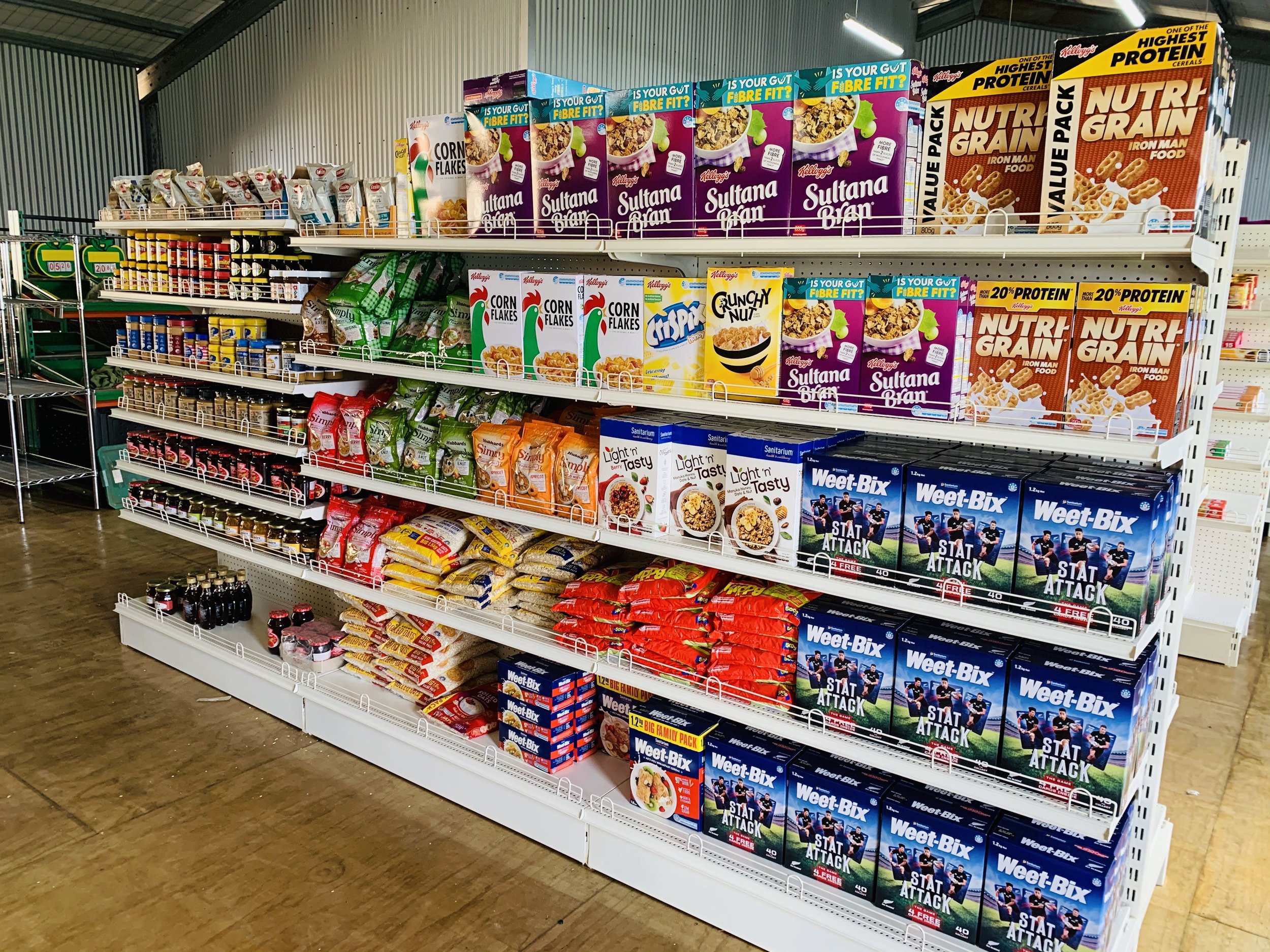
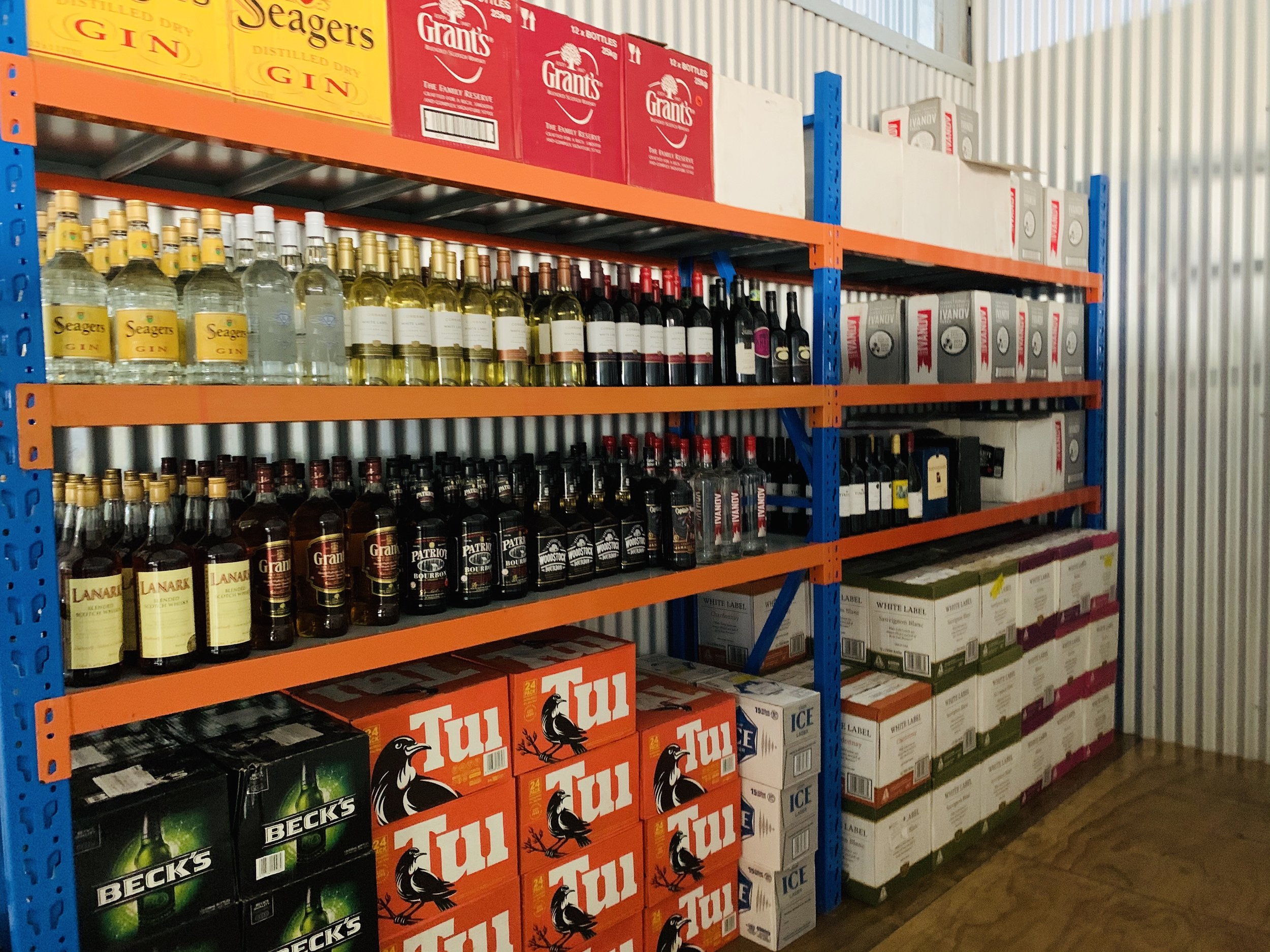
The Post Office
The Pitcairn Island Post Office generally opens on Sunday, Tuesday and Thursday mornings and before and after the arrival the quarterly supply ship which freights the island’s international mail.
Until 1926, letters from Pitcairn franked ‘Posted on Pitcairn Island: no stamps available’ were delivered free of charge in New Zealand and elsewhere. For the next 14 years New Zealand stamps and rates were used, and on October 15, 1940, the first Pitcairn Island postage stamps, consisting of eight denominations, were issued. In 1941 a small post office was built in the Square of Adamstown and the amount of mail increased significantly. Today, mail to and from the island is still sent via New Zealand and can take many weeks before reaches its international destinations.
The Government Treasury Office
Pitcairn’s official currency is the NZ dollar and all government related transactions and banking matters are processed via the Government Treasury office (GT Office). Locals and Visitors can access cash on credit cards and exchange foreign currencies here too. The GT Office opens 3 days a week on Sunday, Thursday and Tuesday.
The Museum
The Pitcairn Island Museum is currently situated above the Square, and displays a number of artifacts and items, some of which have been donated and loaned by islanders and people from all over the world. Artifacts, such as the stone tools, which were made by ancient Polynesians prior to the arrival of the mutineers, are on display. An anchor, from the Bounty and restored in Australia, has a place of pride. Other artifacts include Bounty relics (salvaged from the wreck), a well-used traditional wheelbarrow plus kitchen equipment and tools from the early days. Pictures of bygone generations are lined up in glass cases. There is also a display of numerous books and articles written about the mutiny and Pitcairn Island, which have inspired even more books, movie and articles as well as visitors to the island.
The general standard of health on Pitcairn has been as high as anywhere in the Pacific. In the earlier days, the island’s isolation protected the islanders from some of the diseases that played havoc elsewhere in the Pacific. However, even casual contact was sufficient to introduce the Pitcairn Islanders to common infectious ailments such as colds and influenza. Today, due to the island’s isolation, the Pitcairn Islanders are still very susceptible to colds and flu carried by visiting ships or visitors to the island.
New approved migrants are required to provide evidence of private medical/travel insurance, with medical evacuation coverage of at least US$500,000, prior to travelling to Pitcairn. Private travel/medical insurance must be maintained by approved new migrants throughout their 2 year (non-consecutive) permanent residency period (see GPI Health Centre Operational Policy).
New approved migrants are required to pay full costs for treatment and medications at the Pitcairn Island Health Centre through-out their 2 year (non-consecutive) permanent residency period.
The Pitcairn Health Centre
Until 1944 there were no medical personnel on the island, and islanders relied on their own remedies and the occasional doctor coming ashore from ships. But in 1944 the Australasian Union Conference of the Seventh-day Adventist Church appointed the first resident nurse on Pitcairn. For many years it was the practice for the wife of the resident Pastor to be a trained nurse, residing on the island for a 2-year term.
Since 2004 there has been a resident doctor, contracted for a 6 to12 month term, always available on island. He or she is supported by a local, qualified nursing assistant and firm relations with French Polynesian has enabled Pitcairn Islanders to seek more specialist medical treatment in Tahiti as well as in New Zealand when necessary. Pensioners get free medical care and when overseas medical treatment is necessary Pitcairn’s own Medicare system, which covers up to 2/3 of all costs, comes in to play.
The Library
The public library is now located at the temporary Cultural Centre site. A good selection of books and DVDs for both children and adults can be found on the shelves, including books on Pitcairn’s history and heritage. “Mutiny of the Bounty – Story of Pitcairn Island”, a book written in 1894 by a native daughter, Rosalind Young, is proudly displayed.
The Pulau School
Pulau School is built to provide pre-school and primary education for resident children.
When required teachers are appointed on 1-year renewable basis. The New Zealand curriculum is taught. Cyber safety policies are also part of the curriculum. Higher Education from 13 years is usually completed at boarding school in New Zealand.
There are no school age children currently on Pitcairn.
Our Community
The People Of Pitcairn
The majority of Pitcairn Islanders are descended from the nine mutineers of His Majesty’s Armed Vessel Bounty who, led by Fletcher Christian, landed on unihabited Pitcairn Island in 1790 with six Polynesian men, twelve Polynesian women, and an infant girl. These European and Polynesian roots can be clearly seen in the faces and customs of the people of Pitcairn today. Into this mix have come other settlers, whether from other Pacific islands, Australasia, America or Europe, continuing a tradition dating from the island’s earliest history of attracting migrants from other nations and creating a community rich and diverse in its cultural heritage.
Following the landing of the Bounty, the next reliable population estimate was provided by Captain Folger of the ship Topaz in 1808 when he stated it to be 35. From that point it grew to a peak of 233 in 1937, and more recently decreased slowly to hover for the past several decades around the 50 figure. The census of December 2017 gave a total of 49 permanent residents and five expatriates. The decline of Pitcairn’s population following the Second World War is largely due to migration, principally to New Zealand, where the younger generation have the opportunity to improve their economic status. In recent times, TV, film and the internet have also brought awareness of opportunities elsewhere. Today the majority of Pitcairn’s children leave the island at the age of 13 to attend secondary school in New Zealand, returning when they have completed their studies. Although many young people do not return to Pitcairn, in recent times a number have chosen to do so, bringing new vitality to the population.
While the population of Pitcairn is feeling the effects of outward migration, it is also aging. The community is aware of the urgent need to grow in order to sustain itself and ensure a viable future. The Pitcairn government has reviewed its legislation and policies to encourage immigration and support those who choose to move to Pitcairn – including making it easier to obtain land, removing restrictions on government employment, and providing more information to potential settlers via its immigration pages and its Immigration Visa and Settlement information Policy.
Pitcairn undoubtedly needs more people, especially (but not only) fit and able younger people and couples with children who are keen to rise to the challenges Pitcairn offers, and who are resourceful, adaptable and culturally sensitive. Life on Pitcairn will not be for everyone. The island’s isolation and small size at times make life on Pitcairn physically demanding and challenging. Residents need to be able to turn their hand to a wide range of tasks, and handle difficulties with pragmatism and creativity. They need to be comfortable living among a tiny community, many of whom have lived on Pitcairn for their whole lives, and respect the quiet way of life on Pitcairn. There’s no access to shopping malls, coffee shops, fancy restaurants, or super-fast internet, and few opportunities to leave the island outside the regular shipping schedule.
But the community is - perhaps surprisingly - vibrant and diverse, and there is plenty to occupy your time on Pitcairn. For those who choose to make Pitcairn their new home, life is never dull. Pitcairn offers huge rewards and a lifestyle which is difficult to find elsewhere.
Please see our FAQs for more details of life on the island.
Safeguarding Children
The Government of Pitcairn Island believes that all children on Pitcairn Island are entitled to live in a safe and nurturing environment. All residents of and visitors to Pitcairn must respect the rights of children. Anyone not doing so should expect to be challenged.
The Government and people of Pitcairn Island and HMG have worked together to establish and maintain robust child safeguarding policies, procedures and standards on Pitcairn Island. These remain constantly under review.
Our standards:
Children’s safety is paramount.
We will not tolerate any form of physical, mental or sexual abuse or neglect of children.
We will work together to create and support a safe and healthy environment for children living on and visiting Pitcairn.
We will encourage and enable children to fulfil their potential.
We will do this by:
Establishing and applying appropriate legislation and policies.
Upholding the rights of children through policy and the law if needed.
Providing information to residents and visitors about expected behaviours.
Reporting and challenging any inappropriate behaviour.
Educating our children about keeping themselves safe.
Listening to and respecting what children tell us.
Measures to safeguard children are underpinned by law in the form of Pitcairn’s Children Ordinance Revised Edition 2014, and supported by island policy and practice, including the Child Wellbeing Charter, the Policy for Safeguarding Children and biennial Child Safety Reviews, the latest of which was carried out in November 2017 by Child Matters. A reconciliation workshop took place in August 2017, in which a large majority of the community came together to acknowledge and learn from the past and agreed to continue to work for a positive future for Pitcairn’s children.






